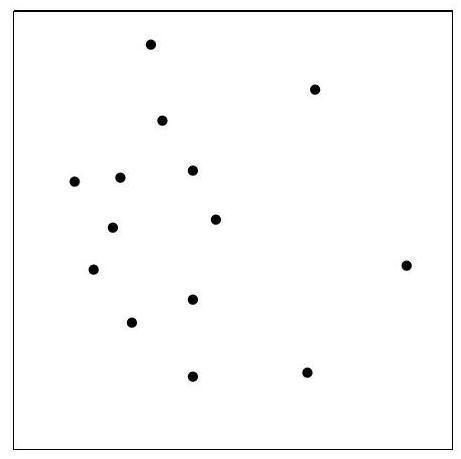Let X and Y be two independent uniformly distributed random variables on [0,1]. Prove that EXk=k+11 and E(XY)k=(k+1)21, and find E(1−XY)k, where k is a non-negative integer.
Let (X1,Y1),…,(Xn,Yn) be n independent random points of the unit square S={(x,y):0⩽x,y⩽1}. We say that (Xi,Yi) is a maximal external point if, for each j=1,…,n, either Xj⩽Xi or Yj⩽Yi. (For example, in the figure below there are three maximal external points.) Determine the expected number of maximal external points.

